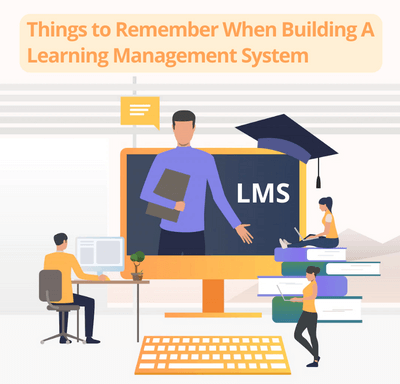
About us
Our Services
Our Expertise
Our Experience
Follow us
Why e2logy?
- We strive to provide superior customer service and ensure that every client is completely satisfied with our work.
- Our engineers are trustworthy, dedicated, and experienced and will go the extra mile to solve your IT issues.
- We are committed to delivering outstanding, cutting-edge IT solutions that add real value that goes beyond what is expected.

Things to Remember When Building a Learning Management System

Using a Learning Management System (LMS) will enable your company to reach its full potential by providing employees with the educational information they need. The Gartner Group found that new employees who completed a formal onboarding plan had a 58 percent higher likelihood of staying with their company over three years. This is because educated employees tend to feel valued, have a high level of job satisfaction, and have happier skills. Maintaining a competitive advantage in an evolving workforce is made easier with an LMS.
What is a learning management system?
It was in the 1990s that the first LMS was established, in line with the concept of e-learning. The term Learning Management System (LMS) refers to an application that is used across a wide range of industries to manage documents, perform administration, track, report, and automate courses. LMS is prevalent in the education industry and is regarded as one of the most prominent industries. Education, training, learning, and development programs can all be delivered with the help of a Learning Management System.
To identify gaps in learning and training, decipher, and comprehend analytical data, and report findings, the technology utilizes artificial intelligence. Using learning management systems, a person’s skill profile and learning history can be used to recommend courses and training programs. As well as reading meta-data extensively, LMS software can improve its recommendations and adapt accordingly.
LMS Types: What Are They?
Learning management systems can be classified in many ways, but here are three main types:
- Installed or cloud-based
- A proprietary or open-source solution
- Commercial or free.
The next step is to outline how the three different types of learning management systems discussed above differ.
Installed or cloud-based LMS Solutions
There are fewer and fewer LMS vendors who offer installed solutions, to the point where even the major players no longer offer them. Installed LMS solutions tend to be considered cumbersome and slower compared to cloud-based solutions because they tend to be ‘clunkier’. Clients need an IT expert with security knowledge to install the LMS instance on their servers, meaning they will need to maintain it in-house. This is the reason why cloud-based LMS solutions are generally more expensive than solutions that are installed on the premises.
There are several ‘modern’ LMS solutions available today, but cloud-based solutions are cost-effective and require less setup and maintenance. In addition to providing cloud-based solutions, LMS vendors also maintain their software, eliminating the need for clients to update their software regularly. Even though cloud-based solutions offer these extra features, their costs are lower, and no setup fees are involved.
The LMS solution can be proprietary or open-source
There are both open-source and closed-source LMS options available in LMS solutions installed on-premises or in the cloud. Taking an initial look at open-source, let us checkout the root meaning:
As a general rule, open-source software is made available to users or other developers for use or modification. The development of open-source software tends to be done as part of a collaborative process and is made freely available to the public.
There are many kinds of closed-source software, such as mobile apps, which are not free and do not have open-source licenses. Closed-source software is usually not free since its creator or another person retains intellectual property rights, usually copyrights, but it is also sometimes subject to patents.
Users will also have more freedom with open-source LMS software, as mentioned above. Nevertheless, maintaining an LMS solution comes at a greater cost to the company. A vendor that maintains and maintains an LMS is a better option for many enterprise companies.
Commercial or free.
There are many free LMSs available on the market, just like anything else in the tech industry. Start-ups with a limited budget (think: developer, software engineer, etc.) may be able to benefit from free LMS solutions.
Nevertheless, free options are not recommended for big companies with multiple users. It is particularly important in high-consequence industries to use LMSs with compliance features.
Things to remember when building a Learning Management System (LMS)
Let us get started:
1. Create a project plan for your LMS
The first step in validating your idea is to conduct a feasibility study. Investing money in LMS is worth a try only if you can prove it’s worth it.
Using a learning management system, you will be able to have more students, lower expenses, or increase employee productivity after training them. It is more like a forecast for the future, along with the profit you will make. You will gain a better understanding of the LMS and eLearning markets when you understand why and who they are aimed at. It is also important to consider the features that you require. To make the process of developing MVPs easier, we recommend thinking in terms of MVPs.
2. Make sure your LMS provider is right for you
The choice of service providers should be carefully considered. A SaaS or a custom platform can be used to create an LMS. It is recommended to use SaaS-based platforms despite the fact that there are other platforms as well. You can customize everything with a SaaS platform. There are two options available here. A ready-made SaaS application or a custom LMS can be built from scratch.
It might take around 400 to 500 hours to build a complex LMS from scratch with the features listed above. An important part of the work involves communicating about features, architecture, and design. It is another headache to test each feature one by one after the codes are created and integrated.
3. Create a website for your LMS
The creation of content – courses – begins when you choose a platform. It is required that you add a description, a few files, and perhaps videos and images in the gallery before you can create a course. Furthermore, you can add some jobs, questions, and networks at this stage. The course can be invited to students after you have added content.
It is also possible to add a feature to test or quiz your student/employee’s knowledge and capabilities in the initial phases.
4. Student/Employee Knowledge Test
By assigning students/employees quizzes, tests, and exams, we can evaluate their capabilities. You can give a student some tips to improve his/her performance while he/she is taking the test using an LMS. We would appreciate it if you could speak with the student about his approach. Grading should be assigned when the student has completed the test. Students can receive their results instantly in most LMSs. Occasionally, students are informed immediately after answering a question that their answer is correct, so there is no need for them to wait. To improve the platform for online learning further, you can take a variety of steps.
5. UI/UX and responsive apps
Responsive LMS websites look good on all browser sizes, which means they should be easy to use. All mobile devices, tablets, and desktops should be able to use the app. Windows, Linux, Mac, Android, and iOS should all be able to access the application. There should be no conflict between Chrome, Firefox, and Internet Explorer, as all of these are popular browsers. Apps should provide intuitive experiences for every user, whether they are teachers, students, or administrators.
6. Taking a final look
You now need to test whether everything is working according to your expectations after you have added courses and invited students. Your LMS will be created as soon as all errors are fixed, and everything is working properly. It is time to make the most of your investment and get your money back.
Wrapping Up
With this information, you should be able to set up a learning management system and find the right resources. A learning management system is essential for your business or institute to train your employees or students. Learning management systems developed according to your specific needs provide you with a solution that fits your business requirements. Your needs will not have to match standard frameworks. Your risk of losing money on a customized learning management system is lower if you outsource it. Flexible production allows you to produce a high-quality product even when resources are limited.
We provide the best custom development LMS services! Contact us today to get your LMS developed to your specifications!













